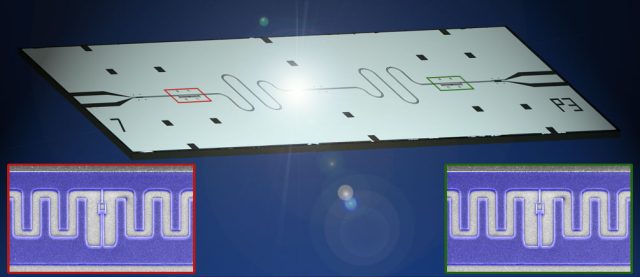Measuring a superconducting qubit by manipulating its environment
Ars Technica » Scientific Method 2013-10-09

Measurement in quantum systems is an inherently challenging problem. The lines are blurred between object, environment, and measurement apparatus, since all are governed by the same physical laws. Interactions between these three govern the results of measurements—in many cases, environmental influences dominate, an effect known as decoherence. It's an unpleasant quantum fact of life, but that doesn't mean physicists have to give up hope.
A new paper describes how to use environmental measurements to gain information about a quantum system that would otherwise be unavailable. K. W. Murch, S. J. Weber, C. Macklin, and I. Siddiqi controlled a superconducting quantum system called a transmon by performing measurements on the cavity in which it resided. In that way, they were able to monitor the transition between quantum states in the transmon without directly interacting with it. This experiment demonstrates an effective way to get around decoherence in at least some systems, which could be significant for quantum computing.
A quantum system is defined by its state: energy, position, momentum, and other physical properties. Physicists interact with these systems through various experimental equipment, which are themselves made up of particles governed by quantum mechanics. The surrounding environment is also composed of the same types of things. As a result, a measurement is an interaction between two quantum systems, and any interactions between an object and its environment can act like measurements, too.
Read 8 remaining paragraphs | Comments




